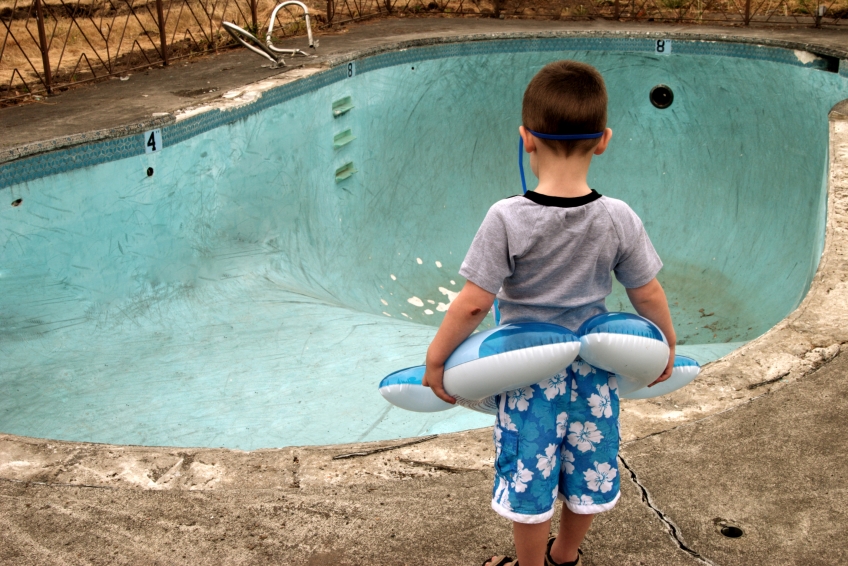When was the last time you visited your local outdoor swimming pool? Or played a match on the local tennis court? Chances are, if you have used such facilities over the years, you know many, if not most such places, are in need of major upgrades.
With five pools and 55 tennis courts in the community – most of which are in dire need of repair – the City of Regina is looking to reduce the number of each and spend a few million on turning the remaining pools and tennis courts into top-notch, well-maintained places which people will be more than happy to use when it’s not snowing eight months of the year.
This would mean five pools would be reduced to three pools and 55 tennis courts reduced to 45 locations. Around $12 million would be pumped into the re-development of the centrally-located Wascana Pool and turned it into a much bigger facility with more space for swimming. A few million dollars more would also be used to upgrade the remaining two pools; nearly every pool in Regina is located near or in inner-city neighbourhoods.
Regina’s five outdoor pools currently operate for an average of 10 weeks per year. To upgrade all five pools would cost $16.5 million over the next five years. City administrators have said a decision has not yet been made about which of the five pools to close. According to figures provided by the city, it costs roughly $130,000 and $160,000 per year to operate each pool.
With 45 tennis courts to look after, it will also be easier to maintain these facilities into the future. It remains to be seen which courts will be deep-sixed, but you can bet the most likely locations will be ones where the chain-link fence is more rusted than an ’83 Buick LeSabre and the nets sag more than an ill-fitted bra.
The decision to do away with pools and tennis courts does make sense on one hand. Much of Canada’s infrastructure was built during the building boom of the 1950s and ‘60s, including roads, bridges and yes, pools.
According to the Federation of Canadian Municipalities, “when much of today’s infrastructure was built, municipal governments were forced to take on the responsibility of building, repairing, and maintaining most of Canada’s core infrastructure without a reasonable, reliable source of funding. Today, municipal governments are responsible for more than 60 per cent of Canada’s infrastructure, up from 34 per cent in the 1960s. They must rely on an out-of-date property-tax system to meet their growing responsibilities, including many downloaded by other governments.”
To even think about maintaining and upgrading every single piece of infrastructure in the country would require a mind-blowing $123 billion, according to former Regina mayor and former FCM chair Pat Fiacco. To put that much money into perspective, $123 billion is about one-tenth to one-fifteenth of Canada’s total economy, itself about $1.74 trillion.
By not having to maintain so many crumbling and under-utilized facilities, the City of Regina can save a few million bucks and put that money back into the more-often used pools and courts. These facilities can then receive the much needed TLC they need to continue on into the future and not be the cause of an injury because of broken concrete or other safety hazards.
(I’ve visited other swimming pools and water parks in Saskatchewan, and let me tell you, the concrete has heaved so much at some pools new pyramids are forming on the prairies. And beside some of those concrete “pyramids” are sometimes little pools of blood because of the people who have stepped on the broken concrete.)
On the other hand, closing two pools located in or near inner-city neighbourhoods may have a major negative impact on the youth who use the facilities. Where else can youth go to beat the heat on a hot summer day if not their local pool? If they aren’t swimming and staying busy, what’s the alternative for what these youth to do? It may not be fair to say this, but for a young person living in an inner-city neighbourhood, the other option could be getting into mischief and doing unhealthy (or illegal) activities.
According to Ivan Amichand, the director of programs for the North Central Family Centre in Regina, as many as many as 75 youths walk from the centre and use the pools for free through city-subsidized passes.
And that’s probably every day too. So in this entire equation, we need to keep in mind the human cost and impact. We can continue building up our neighbourhoods and communities by giving kids positive things to do when they aren’t in school, such as playing at these pools, or we can potentially cause more headaches for ourselves in the long run.
If all the city is worried about is money and paying for the upkeep of these pools, maybe instead of pumping nearly $80 million into the new football facility for the Saskatchewan Roughriders, the city could take some of that, do the right thing and upgrade every pool in Regina and provide family-oriented places to play during the summer.
After all, if a pool is open for 10 weeks of the year, that’s 70 days it is being used. Conversely, the Saskatchewan Roughriders play roughly eight to 12 home games per year, with Taylor Field used roughly four to six hours per day. What’s more beneficial in the long run for the youth of our society?
Think about it.
__
Jason Antonio is the Regina correspondent for Spectator Tribune.
For more follow us at: @SpectatorTrib
